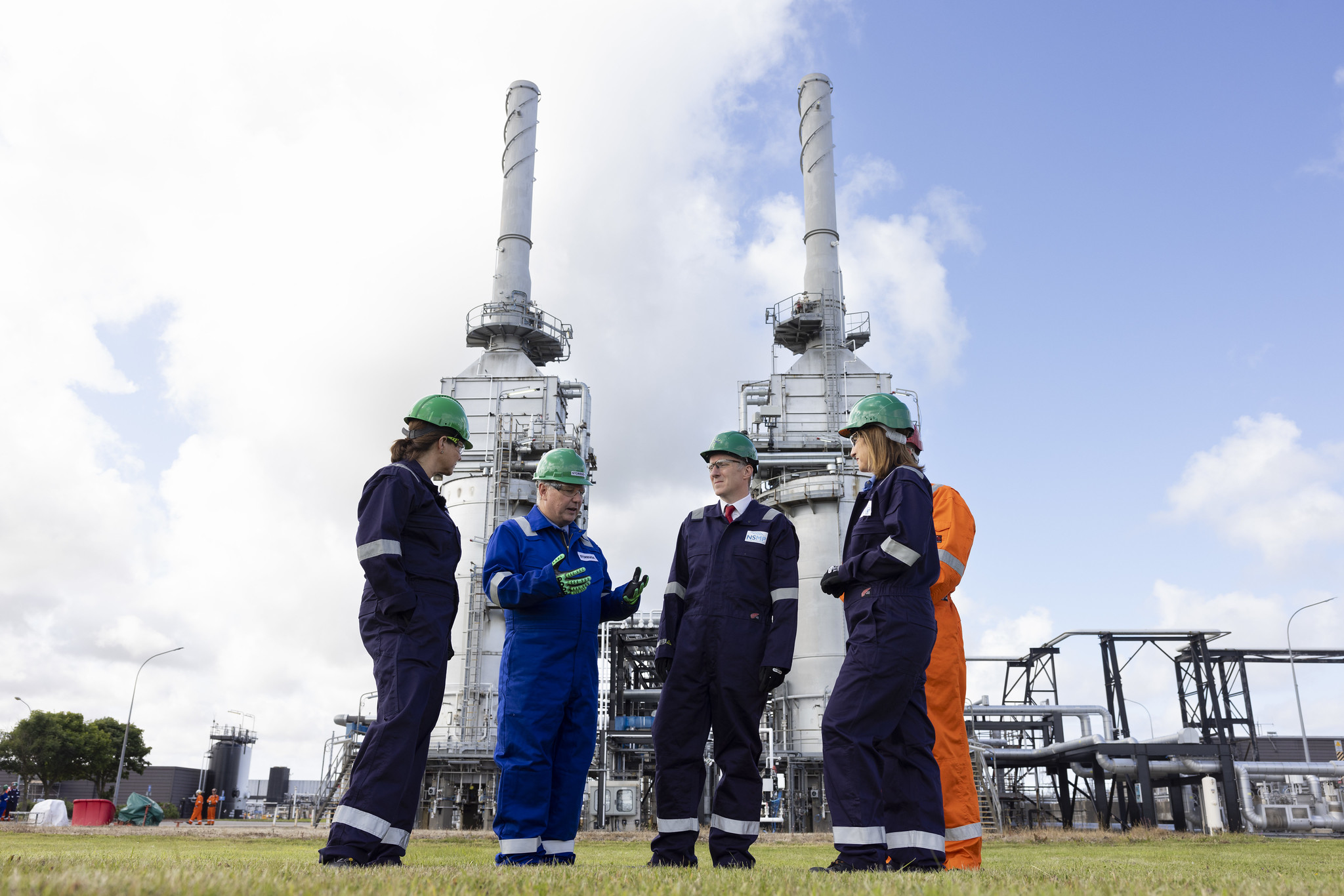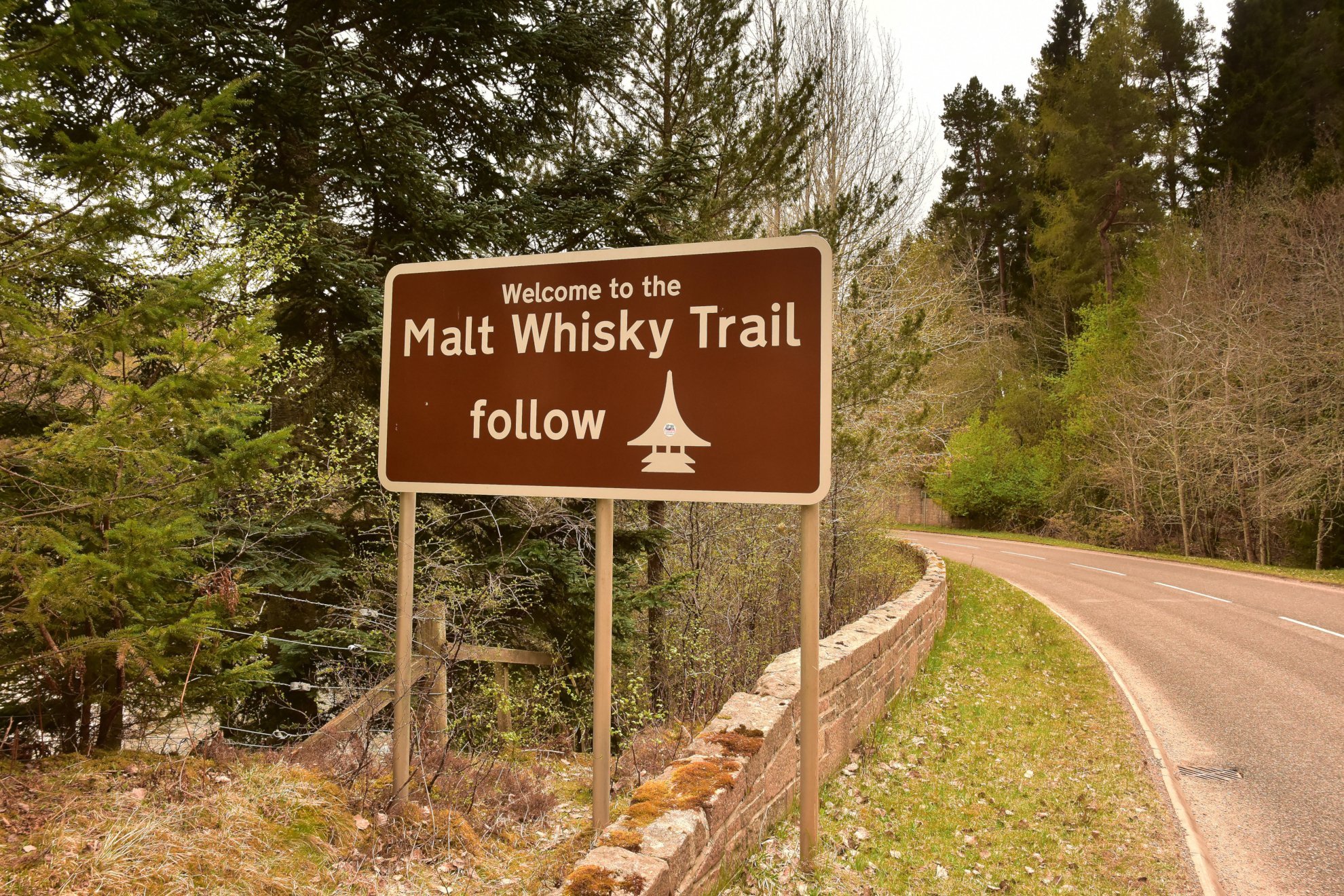The Rt Hon Rachel Reeves MP, Chancellor of the Exchequer, visited the St Fergus Gas Terminal to...


Hydrogen has the potential to significantly reduce emissions in sectors that are typically hard to decarbonise, aligning with the Scottish Government’s goal of achieving net zero by 2045.

Speyside Hydrogen is a pioneering project that will produce green hydrogen to fuel operations across distilleries and other businesses in Moray enabling them to decarbonise in line with their own ambitions and sector targets. When used, hydrogen produces mainly water vapour, making it a cleaner alternative to fossil fuels which release carbon dioxide (CO2) into the atmosphere.
Speyside Hydrogen will deliver an operational 70MW electrolyser facility at Ballindalloch, near Marypark. A planning application for the proposed development was submitted to Moray Council in February 2025.
Moray has a strong heritage of whisky production and innovation and boasts excellent access to renewable energy and transport infrastructure as well as supply chain expertise.

Responsible whisky distillers, in common with many businesses in Scotland and around the globe, face a challenging net zero journey on the back of long-standing reliance on fossil fuels for heat and transport.
The challenges facing those harder to decarbonise segments of the economy are exacerbated by remote and/or rural locations, which add further hurdles to deployment of alternatives including heat recovery (where heat produced from industry is captured and transported to heat homes), electrification (such as electric vehicles), and bioenergy (where waste is turned into cleaner energy).
As part of the transition, this type of energy complements other decarbonisation solutions by converting locally produced, but often constrained, renewable electricity into green hydrogen that can be used to meet industry demands for power, heat and transport.
The technology will play a significant part in meeting carbon reduction targets from both the Scottish and UK governments. Hydrogen is recognised as a key element in the Scotch Whisky Association Pathway to net zero.

Speyside Hydrogen represents an economic opportunity for the communities of Moray and the north-east.

The development will support the decarbonisation necessary to help safeguard existing employment at distilleries and their supply chain partners while creating new highly skilled, high-value jobs during the construction and subsequent operation of the facility.

Speyside Hydrogen can help open the door to new opportunities in the global clean energy sector, while anchoring and attracting new industries, engineering, and suppliers to the region.
%20copy.webp?width=127&height=120&name=Group%209%20(1)%20copy.webp)
And of course, by cutting emissions across distilling and other sectors, the project will help to keep Scotland on an accelerated path to net zero, enhancing the country's global renewable reputation and helping secure the future of one of our most important exports.


We are committed to industrial decarbonisation which is needed to reduce the pace of climate change and ensure a sustainable future for local industries. Speyside Hydrogen is an important part of the pathway to decarbonising the distilling industry in line with the sector’s net zero commitments by 2040 [Link: Sustainability in the Scotch Whisky Industry].
Speyside has 51 distilleries - a third of all distilleries in Scotland. Most of these distilleries use fossil fuels for their operations, especially for the energy-intensive heat needed for the distillation process. Whilst several distilleries plan to switch to bioenergy and/or electrification, for others, this is not a viable option. Speyside Hydrogen provides this group of distillers, alongside regional fleet operators and other large energy users within Moray, access to green hydrogen and an opportunity to decarbonise and ensure a sustainable future.
Speyside Hydrogen will use renewable power from the electricity grid. Concentrating power demand into one location will help to alleviate regional electricity grid constraints and provide a valuable outlet for the high quantities of renewable electricity generated in this region, which is often curtailed (wasted).
Moray is one of 14 locations identified by the Scottish Government, in its Hydrogen Action Plan, to help achieve net zero by 2045. Moray Council has its own Hydrogen Strategy to help support the Scottish Government plan.
We have engaged with distillers and their supporting industries over the last three years, to understand current needs and future plans. Storegga’s business is decarbonisation, so we use our skills and knowledge to work through a “Whole Energy System” approach to inform the best options for large energy users.
Where practical, we recommend prioritising electrification, as this is the most energy efficient decarbonisation route. Some Speyside distilleries are planning to electrify, but for others, electrification is challenging and expensive.
To fully electrify each distillery requires new power cables from a main substation. In an area like Speyside, this requires a significant amount of high voltage cabling, either buried or via pylons, which could cause disruption and potential visual impacts across the region. There are also long waiting times to secure grid connections. Distillers would need to make significant investment in new switchgear and boiler equipment and be able to adjust their distilling processes, because electric boilers do not offer the same responsiveness as a traditional gas or oil-fired boiler. Green hydrogen offers an alternative source of energy that acts in much the same way as the fossil fuels currently being used in distilleries, but without the CO2 emissions.
A local green hydrogen generation site also offers a wider energy system benefit to Northeast Scotland, by reducing the need to curtail renewable wind power and providing grid stability through flexible operation of the electrolysers to help manage regional fluctuations in power demand and supply.
The Speyside Hydrogen facility site at Ballindalloch, Marypark, was selected after a robust selection process, including a review of 25 locations, which were selected from 40 initial options.
Numerous brownfield sites were considered but size, access to power, water or existing pipelines, and a lack of landowner response ruled them out.
Consultation with landowners and other key stakeholders took place, and further site considerations included the proximity to large energy users (including but not limited to Speyside distilleries), access to renewable energy, access to water, and to the gas pipeline network for future transportation of hydrogen, as well as access to the A95.
Having carefully selected the site; we designed the hydrogen production facility to minimise the visual impact and the overall footprint of the facility. The build area is approximately two hectares in size (or the size of three football pitches), within the 42-hectare site. We reduced this by 25% during the consultation process and will keep around 84% of the overall redline boundary free from industrial development.
Most of the area will be used for landscaping and tree planting to screen the site and limit the visual impact. We have carefully designed the buildings and plant to fit with the local environment and will incorporate grazing space to keep the loss of agricultural grazing land to a minimum. The buildings will architecturally blend with other distillery buildings in the area.
Dark sky lighting will be used to reduce any impact on neighbours and nocturnal species and a comprehensive rainwater harvesting system capable of holding approximately two months’ worth of water (harvested during periods of heavy rainfall) will be incorporated to enable us to operate without the boreholes during prolonged dry periods.
Hydrogen can be produced, stored, transported and dispensed safely and is strictly controlled by regulations, codes and standards. We take all aspects of safety (including road safety) very seriously.
Speyside Hydrogen is classified as both a COMAH (Control of Major Accident Hazards) and PPC (Pollution Prevention and Control) site and will be held to the highest safety and environmental standards.
Initially our hydrogen supplies will be transported by road using HGV-hauled tube-trailers direct from the plant to customers, similar to the supply of oil, LPG or compressed natural gas by tanker. Approximately one truck per hour (averaged over 24 hours) will leave the site, with trucks travelling an average distance of around 18 miles.
We aim to contract with local hauliers to encourage regional investment and as a safety measure to ensure drivers are familiar with the road network and the challenges of driving HGVs on rural country roads with unpredictable Scottish weather.
In response to concerns raised over road safety on accessing the site from the A95(T), we moved our site entrance to approximately 150m southwest of the nearby A&F Grant Ltd. The access has been designed to support two-way heavy goods vehicle movements, and we will adhere to all required road safety standards. We continue to work with Transport Scotland to ensure that we are taking all necessary precautions and helping support general road improvement schemes.
In parallel to this, we are developing the opportunity to deliver hydrogen by pipeline, either by blending into the existing natural gas network, or via a dedicated hydrogen pipeline. This would greatly reduce the requirement for tube-trailer transport.